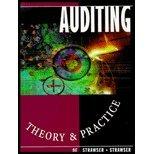Answered step by step
Verified Expert Solution
Question
1 Approved Answer
Consider a market with aggregate demand p=8-q , where q is the quantity and p the price. 1. Compute the monopoly equilibrium, assuming total costs
Consider a market with aggregate demand p=8-q, where q is the quantity and p the price.
1. Compute the monopoly equilibrium, assuming total costs equal to TC=2q. Compute the monopolits profit in equilibrium.
2. Assume that the same market is populated by two firms, A and B, competing in quantities, with total costs given by TCA=2qA e TCB = 2qB. Compute the duopolists profits in equilibrium.
3. Firms A and B now merge. Compute the new equilibrium and profits.

Step by Step Solution
There are 3 Steps involved in it
Step: 1

Get Instant Access to Expert-Tailored Solutions
See step-by-step solutions with expert insights and AI powered tools for academic success
Step: 2

Step: 3

Ace Your Homework with AI
Get the answers you need in no time with our AI-driven, step-by-step assistance
Get Started


